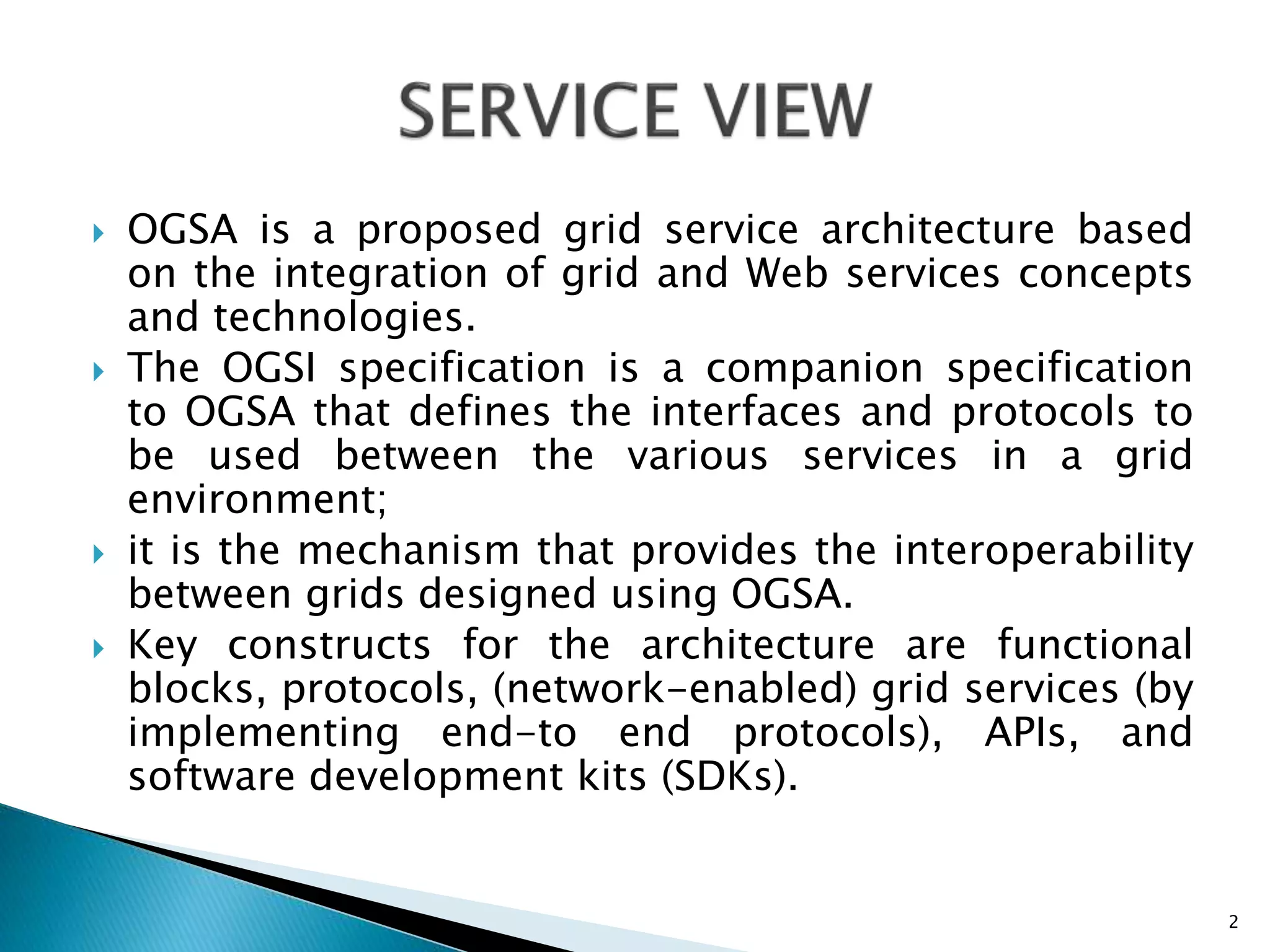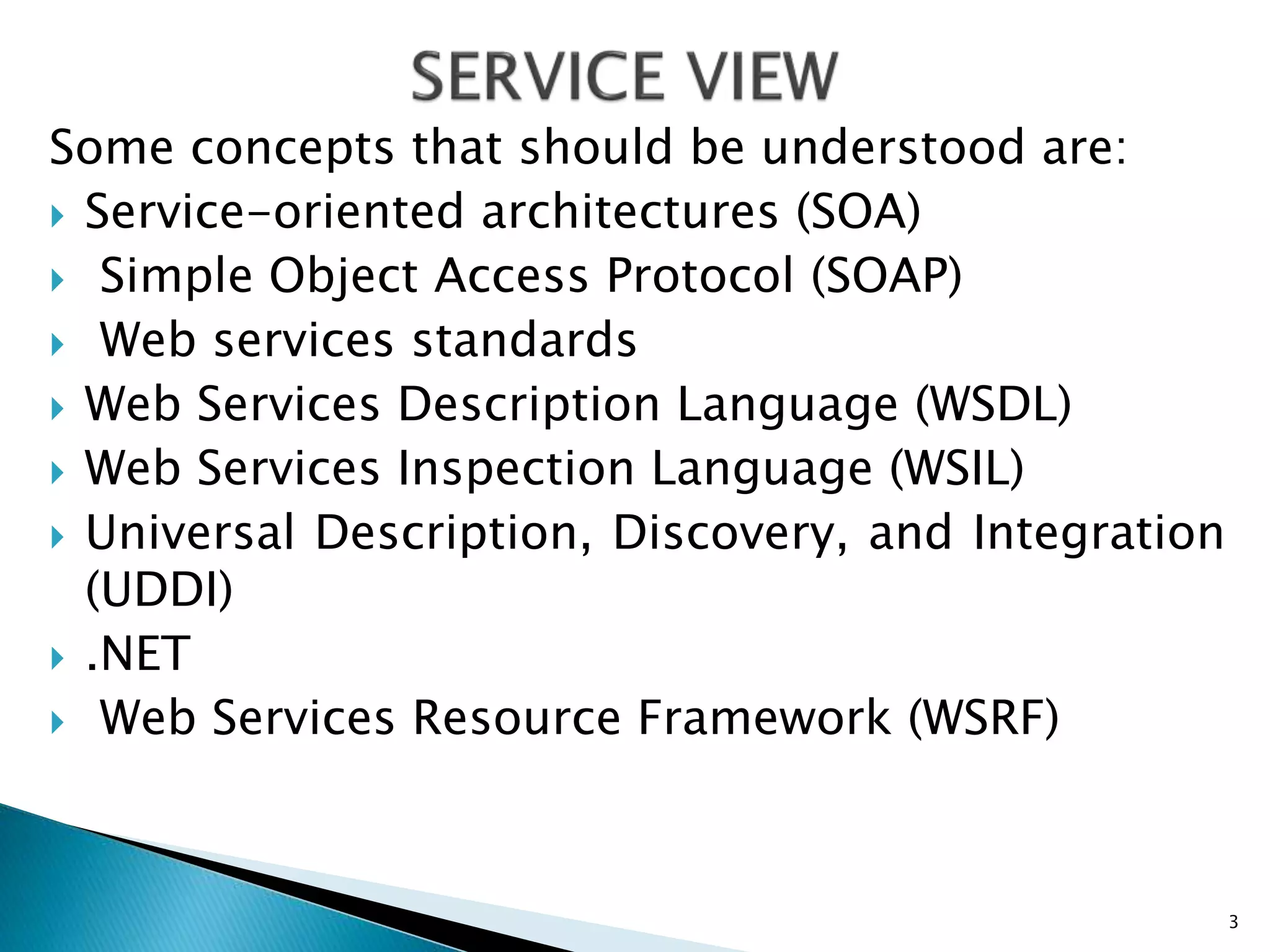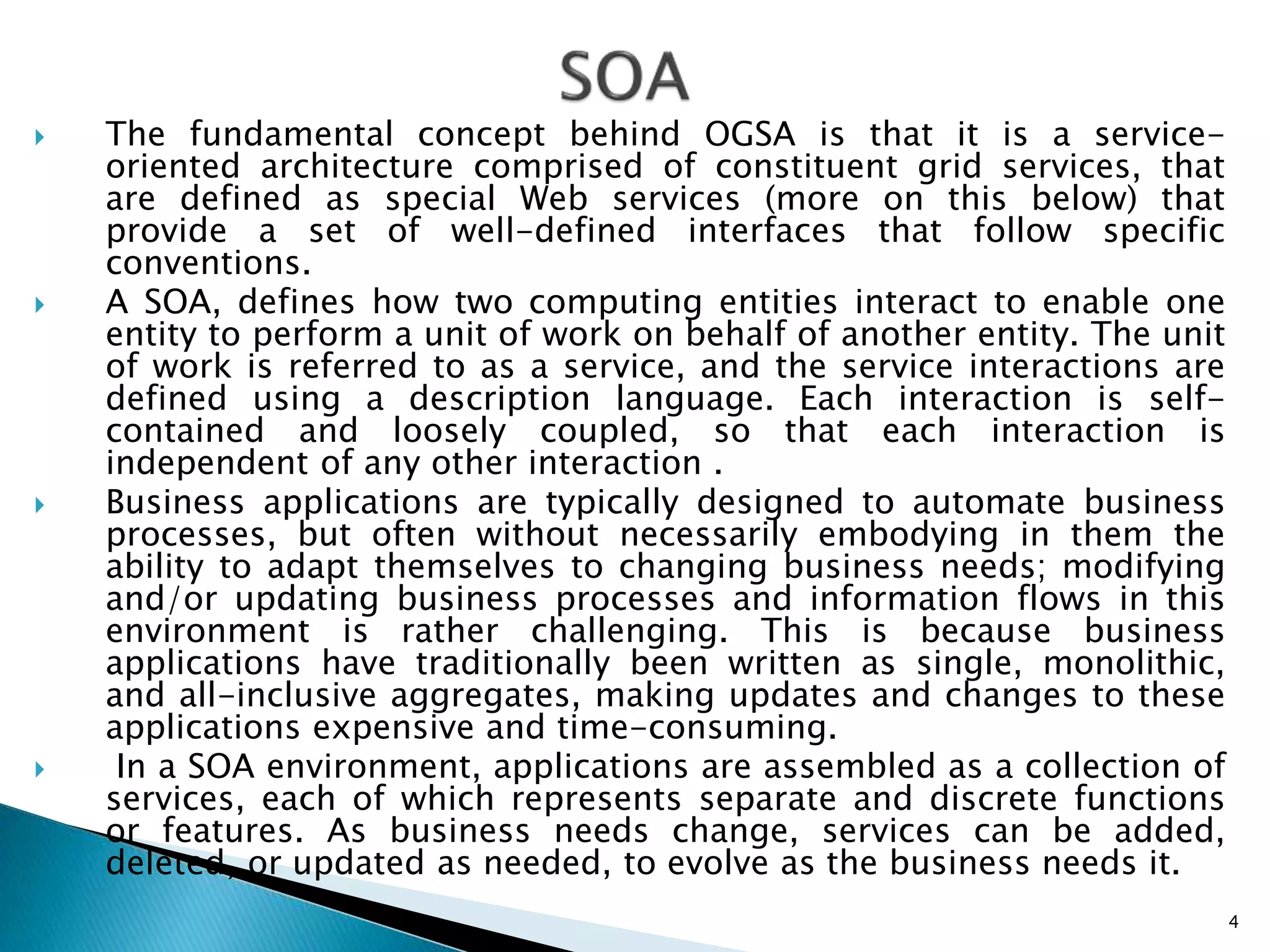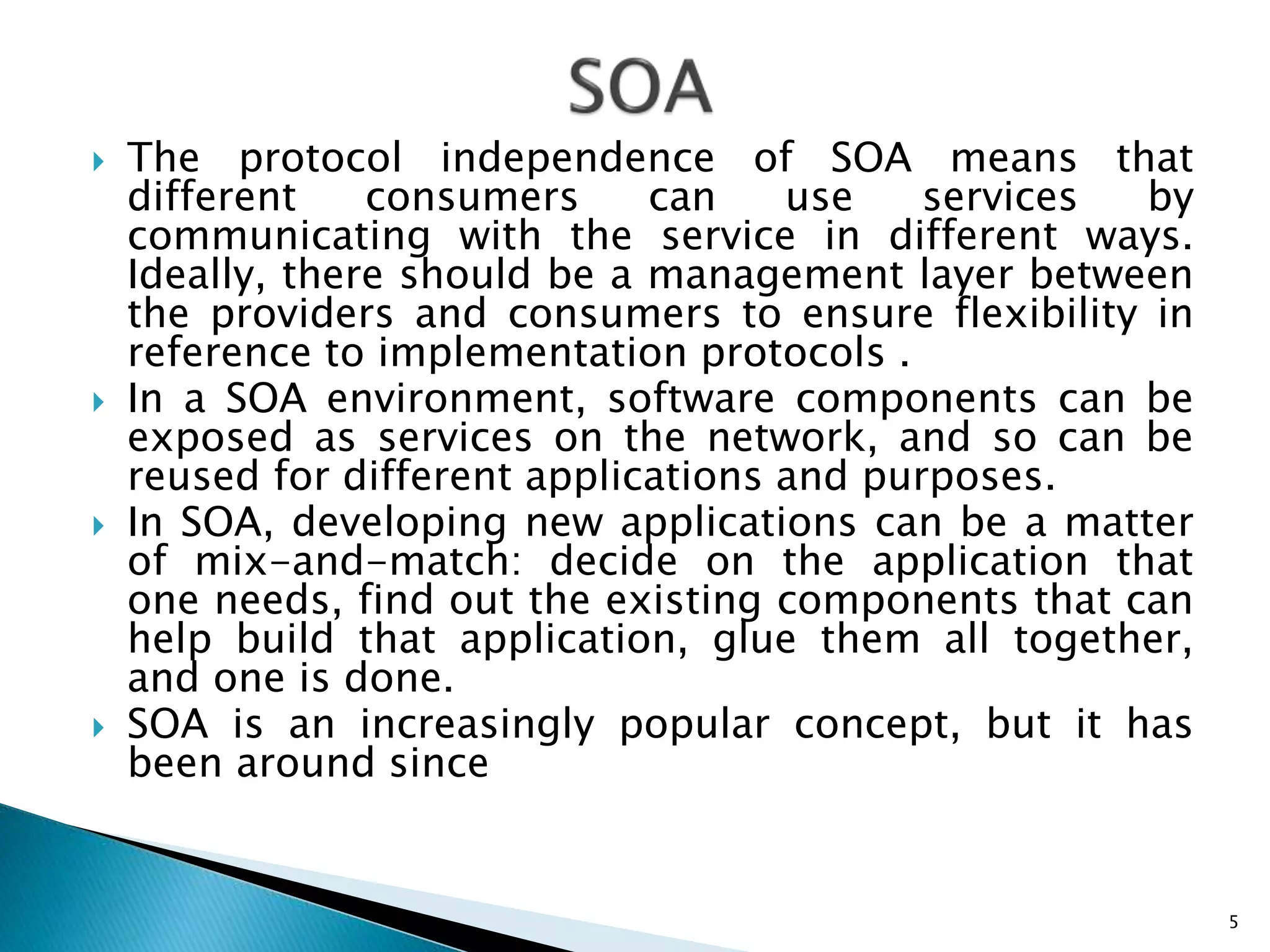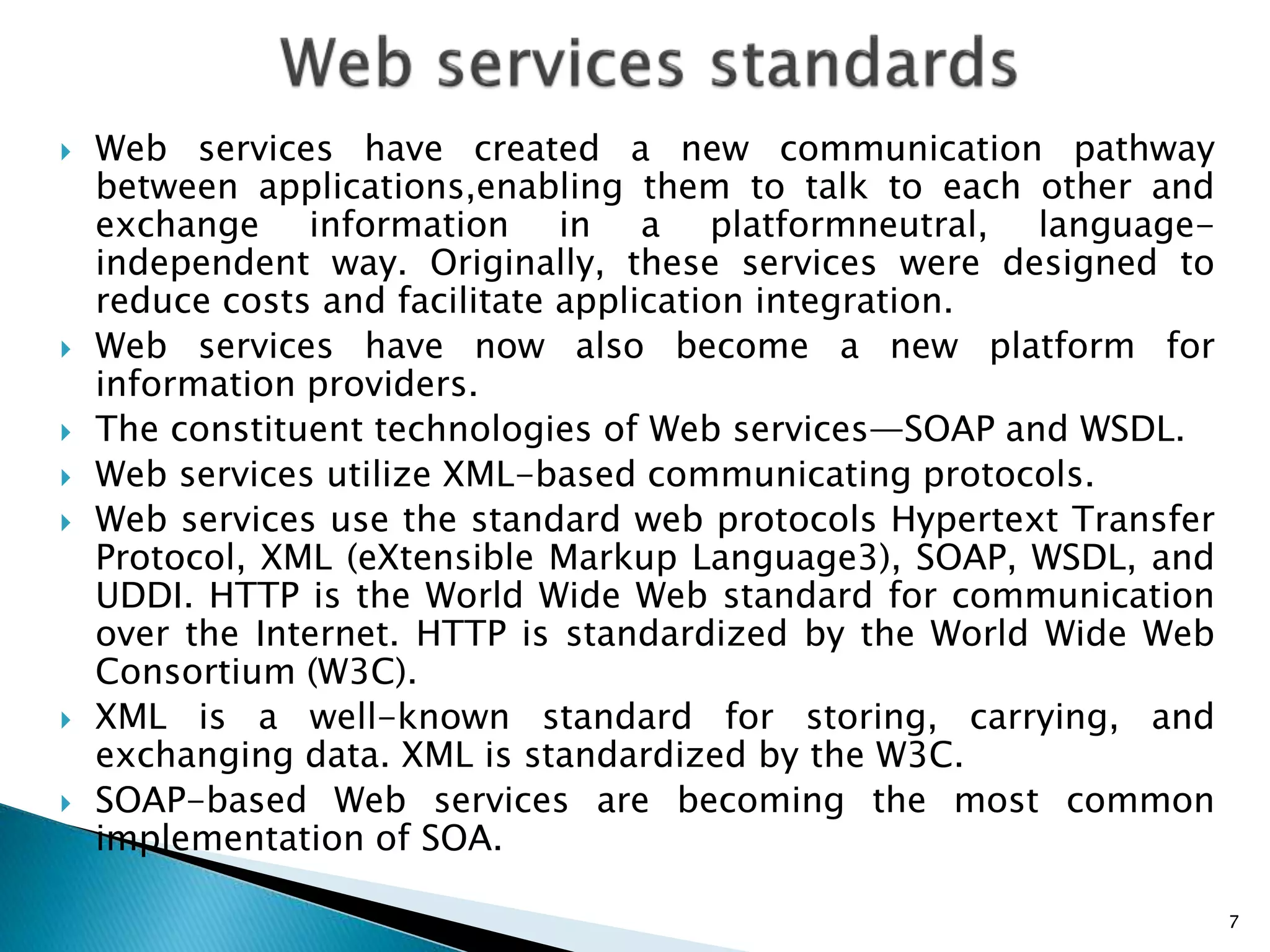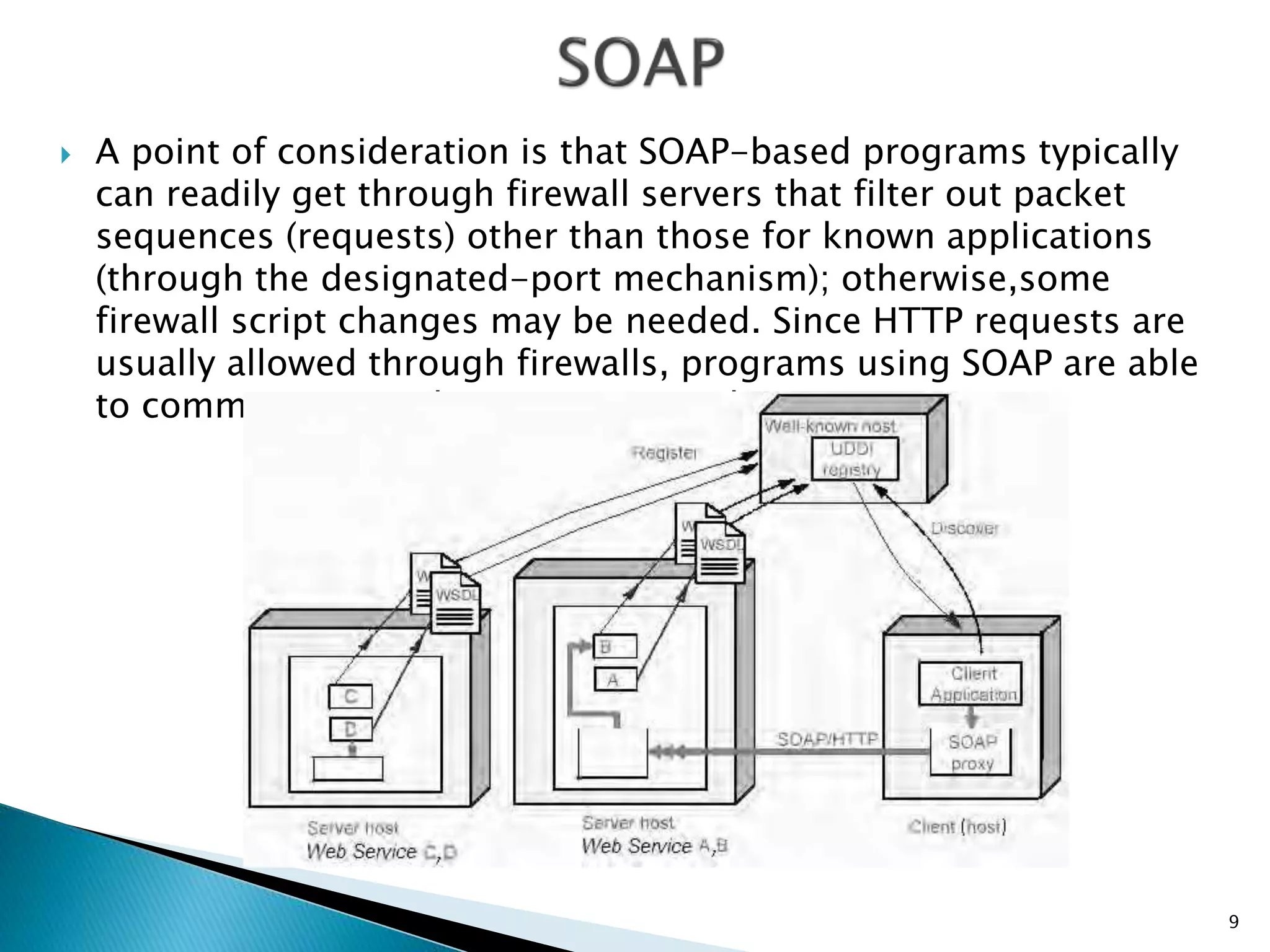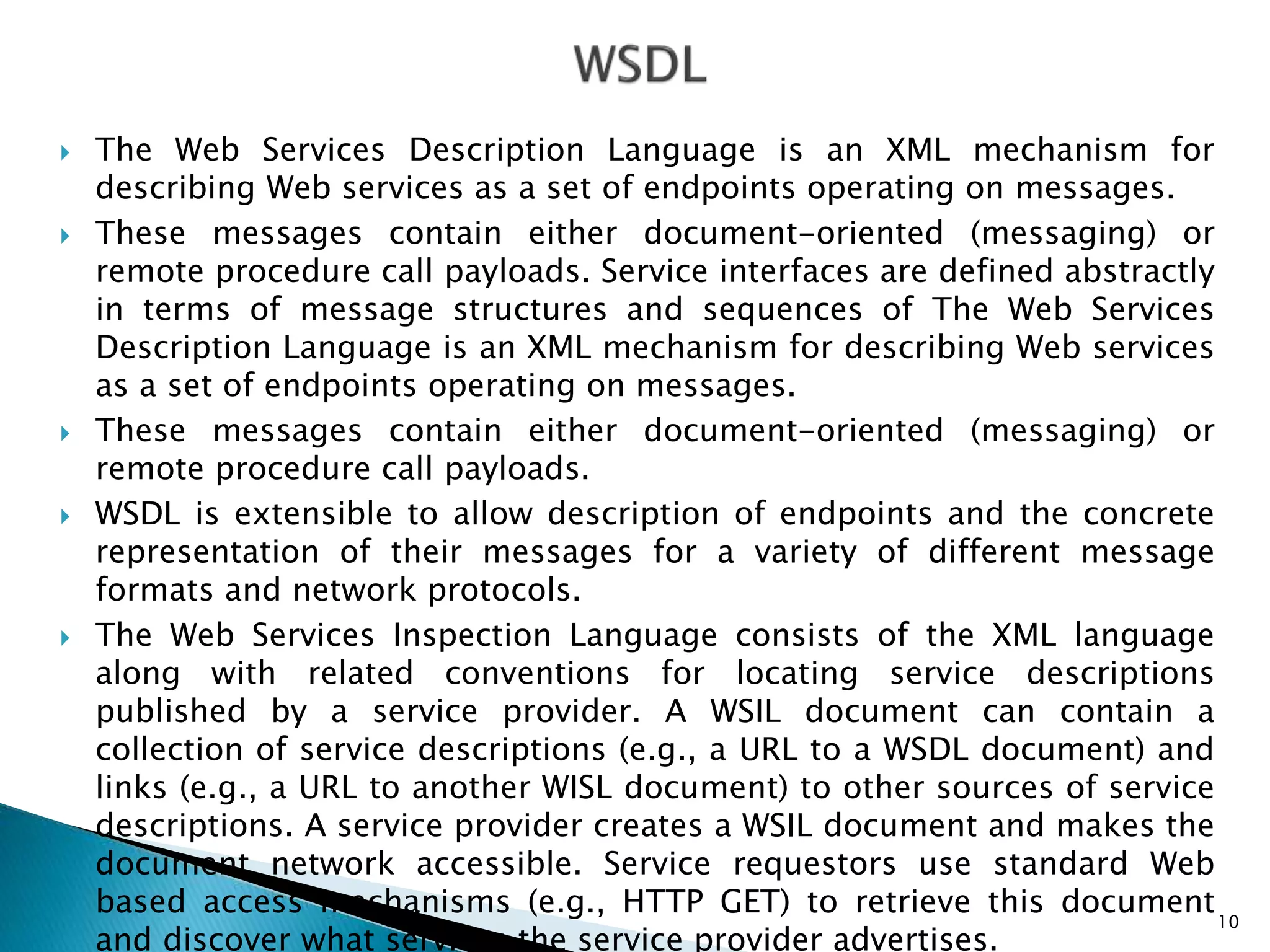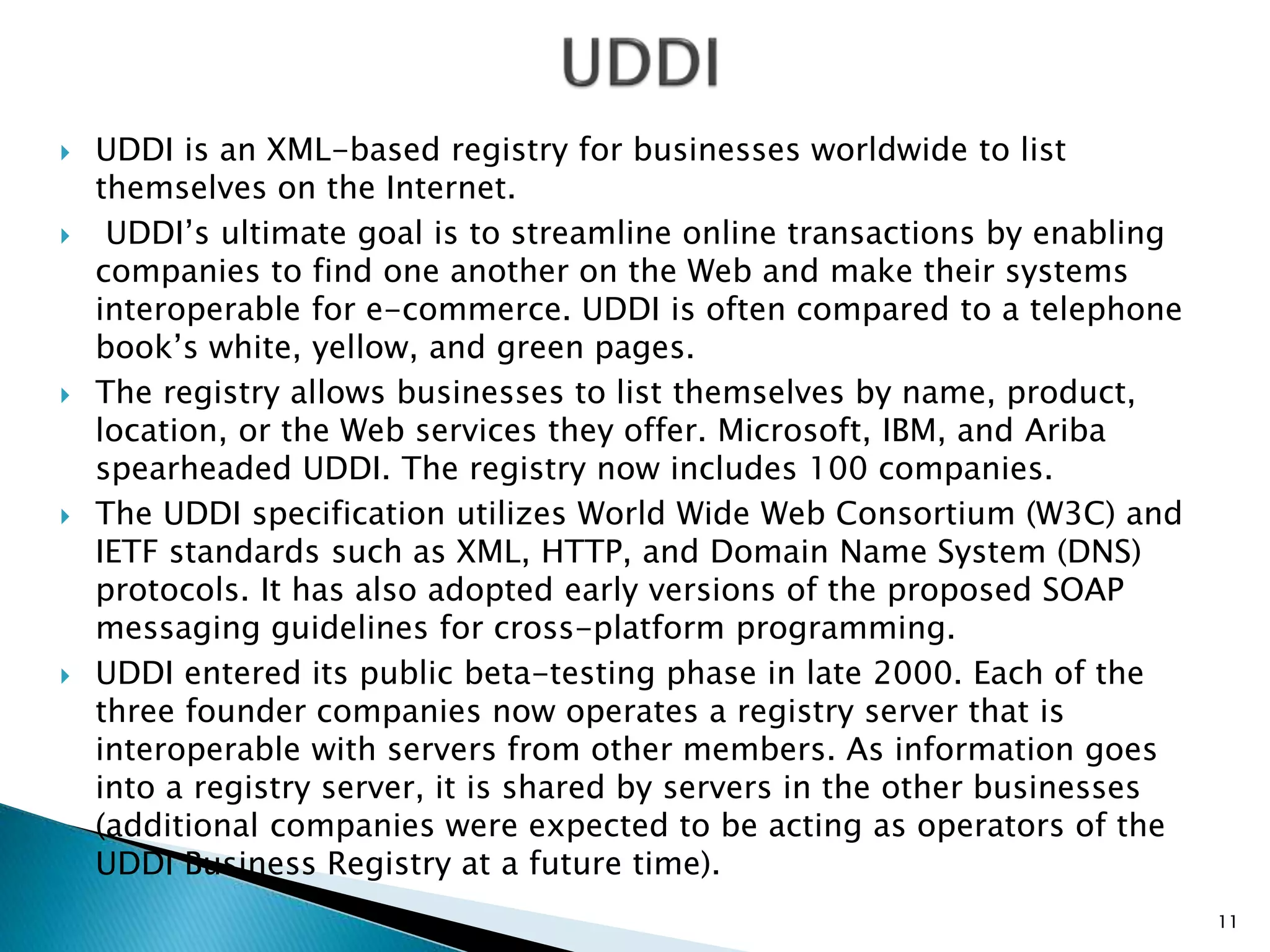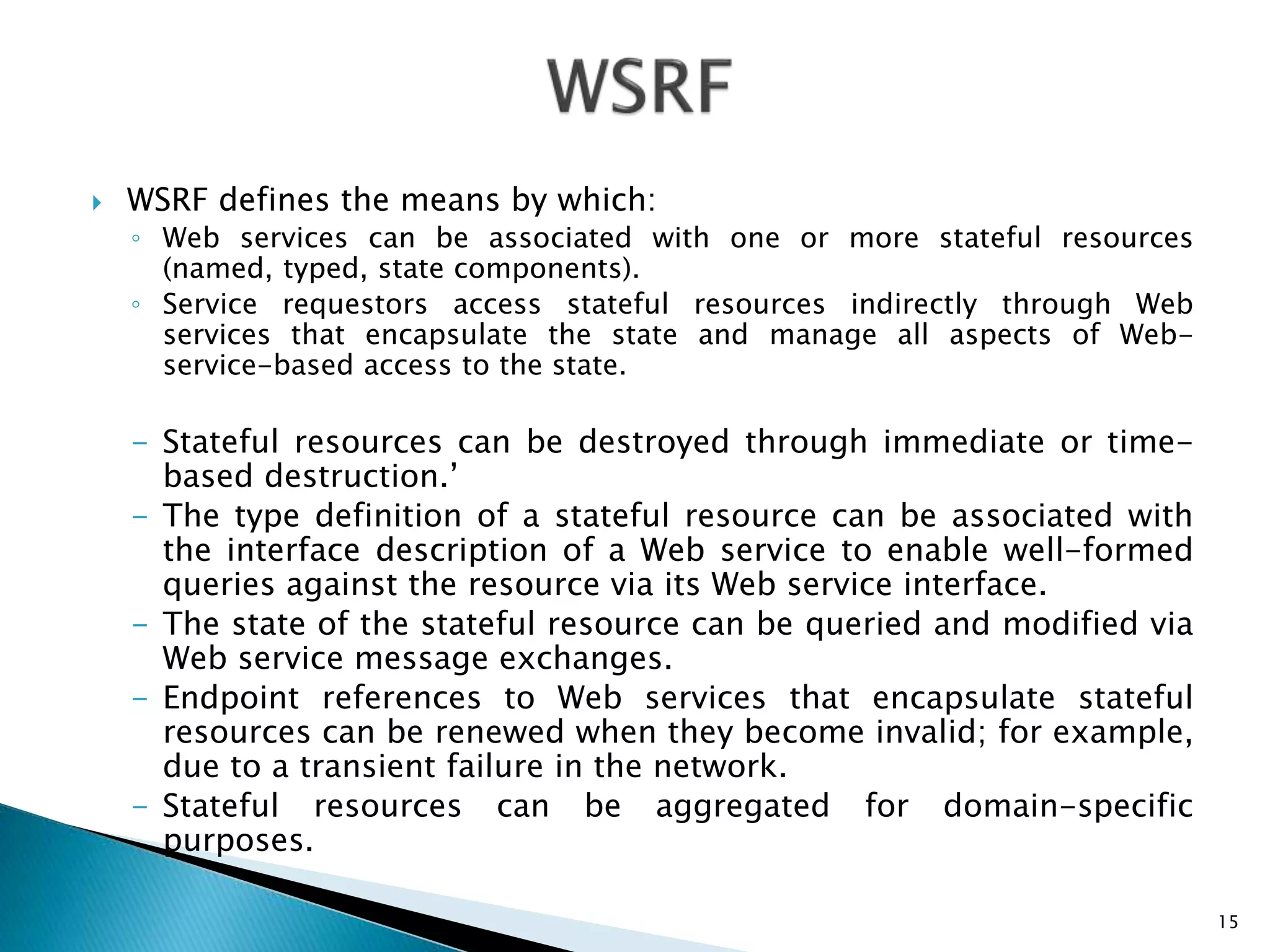The document discusses the Open Grid Services Architecture (OGSA) and related concepts. Some key points:
- OGSA is a service-oriented architecture for grids based on integrating grid and web services concepts.
- The Open Grid Services Infrastructure (OGSI) specification defines interfaces and protocols for services in a grid environment to provide interoperability.
- Core constructs of OGSA include functional blocks, protocols, grid services, APIs, and software development kits.

